Beneath the Music: Building the Foundation With Scales

This is part 3 of the Beneath the Music series. In my previous posts, I showed you a high-level view of The Nashville Numbering System. We then took some time to learn about the staff, notes, and intervals.
Today, we are going to cover scales. A scale is a sequence of notes within an octave range. There are many different kinds of scales which are comprised of whole (w) and half (h) steps.
The Major Scale
The most common of all scales is the major scale. Its pattern is W-W-H-W-W-W-H. Here is an example of what it looks like on the keyboard:
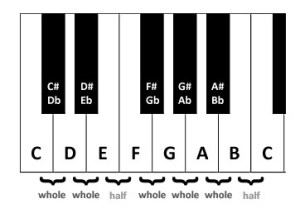
Here it is on the staff:

There are 12 major scales in all – one for each note on the piano.
The Minor Scales
There are 3 minor scales: Natural, Harmonic, Melodic Natural Minor Scale The most common minor scale is the Natural Minor. Its pattern is W-H-W-W-H-W-W.
Interestingly, every major scale has a natural minor scale within it. Let’s find the natural minor scale in the C scale. The trick to finding it is to count 3 half-steps down from the root of the major scale.
The root of a C scale is C. Now, let’s count down 3 half-steps: B, Bb, A. The natural minor scale is A minor. This is also called the relative minor because it shares the same key signature as its relative major.
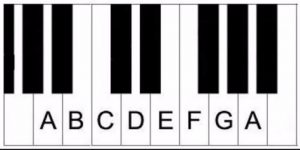
Here it is on the staff:

Harmonic Minor Scale
The Harmonic Minor Scale is the same as the Natural Minor Scale except that the 7th scale degree is raised. Its pattern is W-H-W-W-H-minor 3rd-H. The raised 7 gives it a bit of a haunting sound.
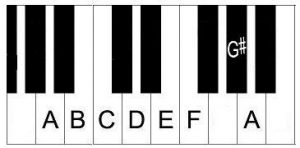
Here’s what it looks like on the staff.

Melodic Minor Scale
Last but certainly not least is the melodic minor scale. The melodic minor scale has a raised 6 and 7 scale degrees when it ascends. The 6th and the 7th degrees of the scale follow the key signature on its descent. See below.
Ascending and Descending

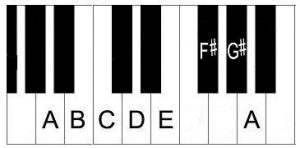
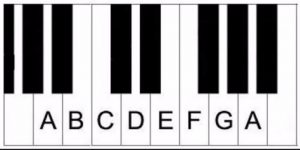
That’s it for now! Next time we will learn about major and minor keys. Hang in there!
